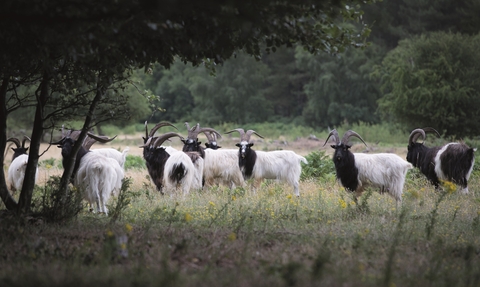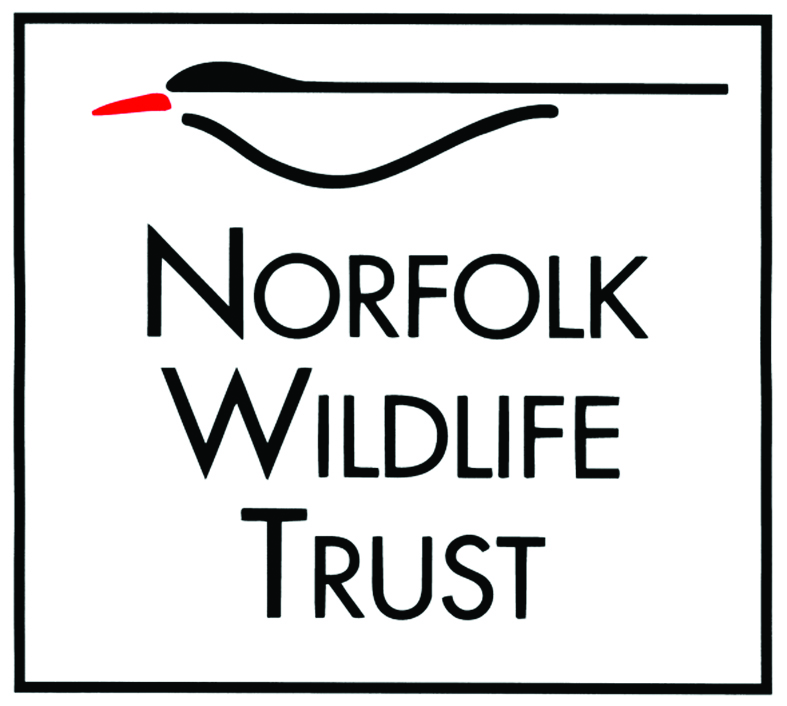
Goats grazing (credit: Jimmy King)
Sheep and goats
Sheep
Although sheep don’t appear in our historic native fauna (in the same way that cattle and ponies ancestors do), they have been instrumental in forming some of our richest wildlife habitats, in particular chalk grassland and Breck heath. In Norfolk we use two breeds, both chosen for their hardy traits and ability to thrive on poor quality grazing.
The black Welsh mountain, as the name suggests, hails from the Welsh hills, where they are still kept by many enthusiasts and smallholders. They are a medium sized, stocky type sheep, with thick fleeces that help them stay warm and dry, whether in the Cambrian Mountains or the Norfolk Brecks.
Our second breed of sheep is the Shetland, another hardy native breed, this time from the very north of the British Isles. They are known as a primitive breed – their history dating back to around 500AD. Like the Welsh breed, they do well on poor quality grazing and can withstand wet and cold weather.
In Norfolk both breeds help us to maintain sites in the Brecks, where their close cropping of the vegetation produces a short sward so loved by specialist plants and insects. Although not a common habitat in Norfolk, sheep are also used on our chalk grassland sites and Narborough Railway Line and Ringstead Downs, gently but persistently nibbling away at encroaching scrub on these species-rich sites.
Goats
We have a small herd of Bagot goats. This striking black and white breed is believed to be Britain’s oldest breed of goat. The first recorded account of the breed appears in historical documents from 1389, when Sir John Bagot was known to be the keeper of the original herd at Blithfield, his Staffordshire estate.
Both sexes have long sweeping horns, ideal to defend themselves and for pushing through vegetation. Indeed, some animals learn the habit of using them as a hook, to pull down out-of-reach branches with tasty leaves at the end of them!
Although often thought of as like sheep, they have very different eating habits. Whereas sheep are grazers, preferring a diet of mainly grass and herbage, goats are preferential browsers, which means they seek out woody material and coarse leaves over softer grasses.
Our herd of goats is confined to the Brecks where they help us to manage heathland restoration sites that we look after for Forestry England as part of the Brecks Heath Partnership. We plan to grow the herd gradually so we can benefit from grazing other heathland and grassland restoration sites around the county.
